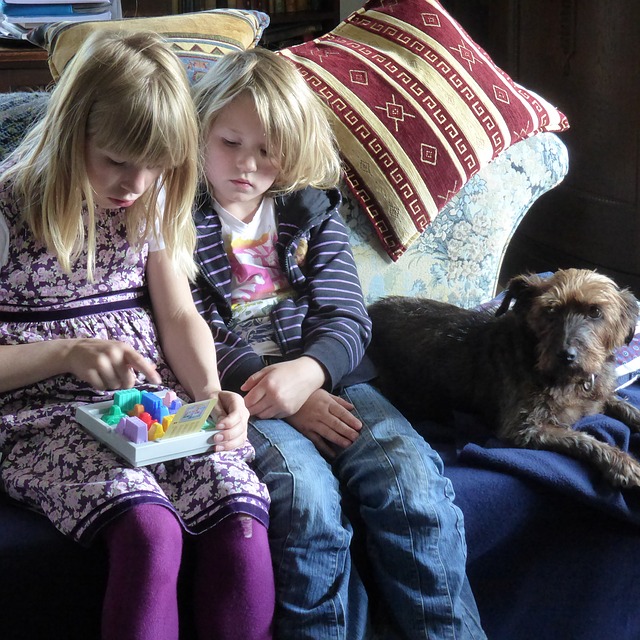Canine Confusion and Your Child: All About Avoiding Dog Bites and Aggression
Dogs are a man’s best friend, but sometimes when it comes to children, they can show aggression and even bite. Most of the time, dogs won’t show aggression unless trained to do so or when provoked. Teaching children about the right and wrong ways to approach and treat dogs helps defuse canine confusion and can avoid a serious injury.

Curb the Tugging and Hugging
Kids are impressionable and watch cartoons and movies depicting dogs that are ridden, undyingly playful, and even exhibiting traits of humans. However, dogs, though smart, are animals and can be possessive of owners, family members, territory, and possessions. Guard dogs and herding breeds can be especially possessive yet any kind of dog can show aggression due to a possessive nature.
Teach children to leave dogs alone when they are eating or enjoying a treat. Attempting to tamper with, take away, or even approach their food can result in a show of aggression. Owners sometimes use treats to show dogs that it’s not always bad when a human approaches the food bowl.
Don’t Cause Reason for Panic
Like humans, dogs can become afraid, which may result in aggression or biting. Dogs grow afraid around strangers, veterinarians, postal workers, or people present in unfamiliar situations. It’s unwise to approach an unfamiliar dog despite good intentions. Children, meaning to be playful, may sneak up on a dog or want to pet it, which can startle a dog and make it bite due to fear or panic. Also, teach your children to never sneak up on a sleeping dog.
Owners should start exposing dogs to different people and situations early so that they grow accustomed and less prone to act aggressively. For example, some owners make the first trip to the vet a ‘visit’ rather than a long stay, so when a dog must go for a checkup they will be comfortable and less likely to show aggression.
Stay Aware of Dogs in Pain
Mild to severe pain can cause the friendliest of dogs to bite. Hip dysplasia, otitis, chronic injuries, or sudden and sharp pain can inspire aggression and biting. Teach children to stay aware of dog pain and not to pet around sore or injured areas of the dog’s body. If a usually kind dog is acting uncharacteristically aggressive, head to the vet as soon as possible.
Know About Maternal Instincts
A range of animals have maternal instincts and will act aggressively in order to protect their young. A well trained dog will bite when they have puppies. Teach children to be gentle and to not suddenly approach a puppy around its mother. Ensure that the mother and the puppies have a comfortable place to rest and feel safe.
Don’t Imitate Prey
Running or cycling past a dog can result in a chase. Teach children to be aware when riding their bike in the neighborhood. Dogs are protective of their territory and may give chase if a person runs or cycles near them. If you see a roaming dog, do your best to avoid crossing its path. If a dog does give chase, stop, stand tall, and face the dog. Stay aware of its movements but do not look in its eyes. They may get closer and sniff, but will likely get bored and move on. If a dog knocks you down, curl up while protecting your face and neck.
Know the Warning Signs
Knowing warning signs can help people and children avoid aggression and bites. Before a dog bites, its ears are usually pinned back, the fur on the back stands up, and it’s easier to see the whites of their eyes. Yawning is meant to show off their teeth and should be considered a warning sign. Freezing in response to a touch or direct, intense eye contact is a clear sign that aggression will soon follow. If you or child are injured by a strange dog, don’t hesitate to explore legal options at ckflaw.com.
Dogs are Pets and Not Play Pals
Of course, dogs love to play but it’s important for children to know the difference between playing with an animal and with a human peer. Avoid playing aggressively or wrestling with dogs. Such play can lead to dominance issues. Do not allow an untrained dog to roam free off of a leash where they may come into contact with strangers. It’s important to a dog to come into contact with other people, yet it should be done in a gradual and controlled manner.
Maisie Kay is in her first year studying law in NYC. A keen reader and writer in her spare time, Maisie enjoys sharing her idea and knowledge by blogging.













